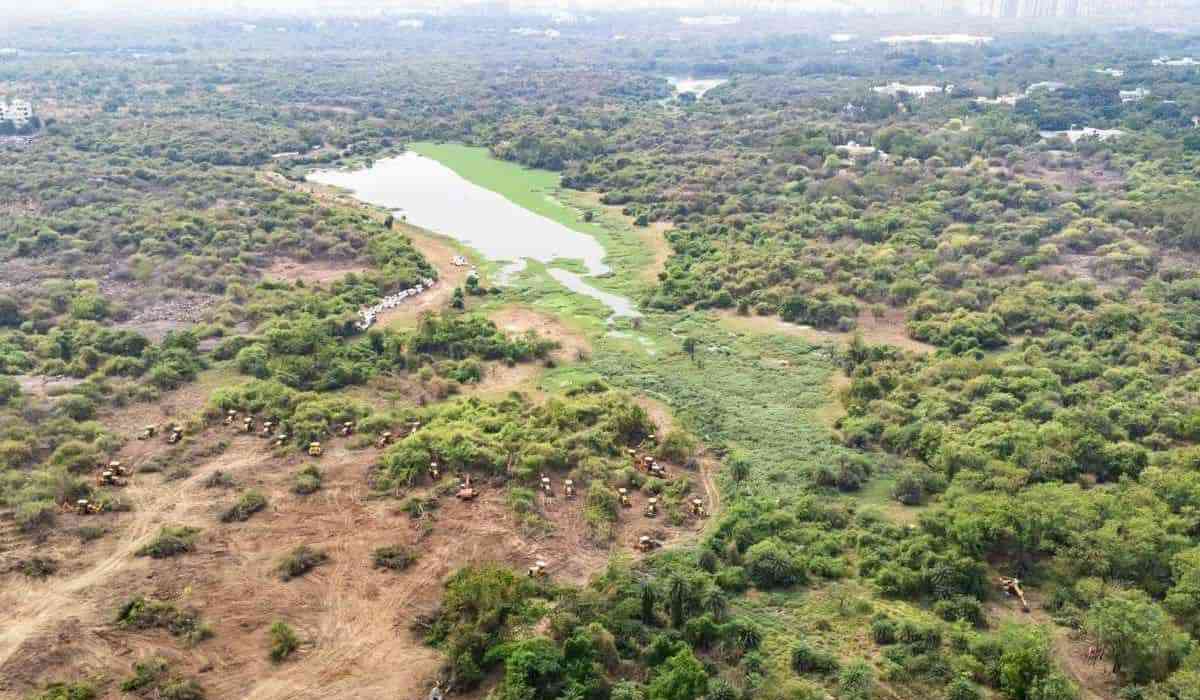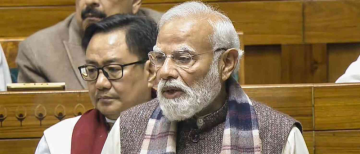In a sharp judicial rebuke, the Supreme Court of India has pulled up the Telangana government over the large-scale felling of trees in Kancha Gachibowli—an ecologically sensitive area spanning 400 acres near the Hyderabad Central University (HCU). The apex court has ordered a complete halt to all tree-felling and construction activity, demanded a credible restoration plan within four weeks, and warned that senior bureaucrats including the State Chief Secretary could face temporary imprisonment if the state fails to comply.
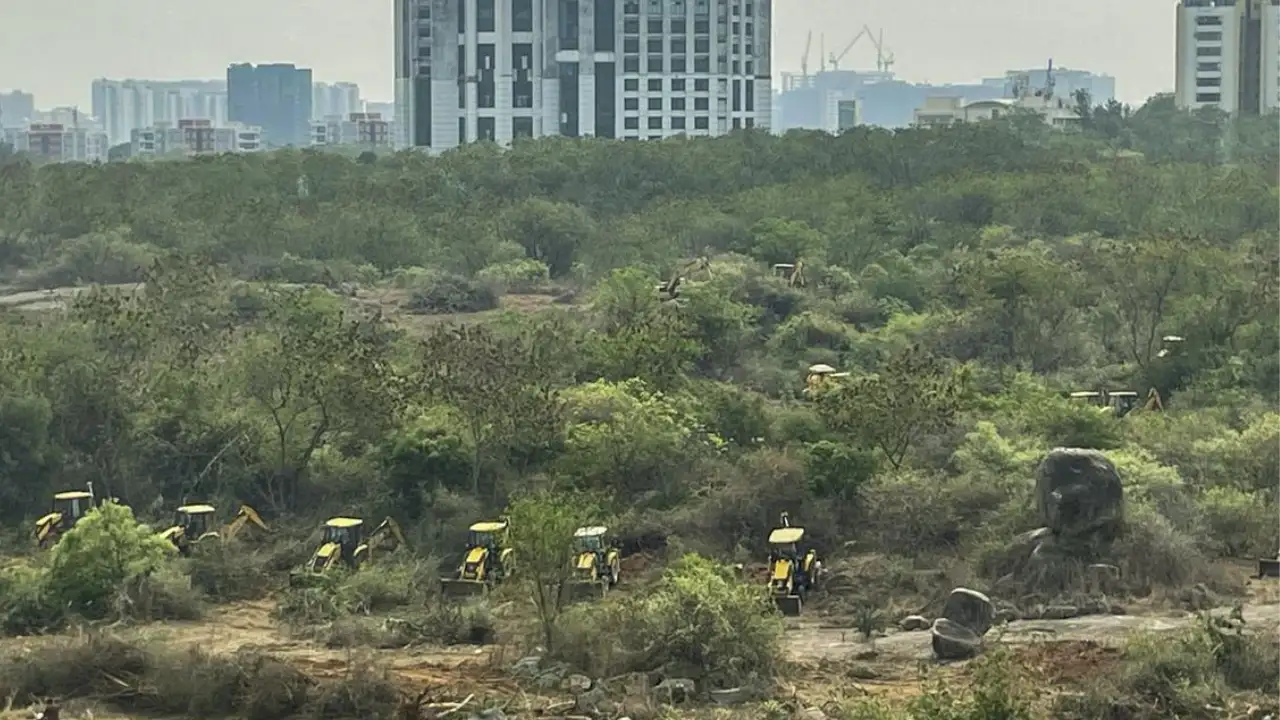
Supreme Court’s Suo Motu Action: Triggered by Reports and Protests
On April 3, 2025, the Supreme Court took suo motu cognisance of the situation, following reports of tree felling during a long holiday weekend in early April. Senior advocate K Parameshwar, serving as amicus curiae in forest-related matters, flagged the issue. The Court ordered an immediate halt to all activity on the land, except for measures needed to protect existing trees.
Key Judicial Observations:
-
The Supreme Court condemned the felling of approximately 1,500 trees—of which 1,399 were allegedly classified as “exempted”—without permission from appropriate authorities.
-
Justices BR Gavai and AG Masih emphasized that even exempted species require proper oversight, especially when done at such scale and in ecologically sensitive zones.
-
The bench ordered the Telangana Wildlife Warden to take immediate action to protect wildlife affected by deforestation.
"Even private forests require the court’s permission to fell trees," the bench said, rejecting the state's arguments based on the Telangana Water Land and Trees Act, 2002.
Key Early Directions:
-
Immediate halt to all tree-felling and excavation on the 400-acre land parcel.
-
Protection of existing trees, unless Court permission is explicitly granted.
-
On-ground inspection by the Telangana High Court Registrar (Judicial).
-
Site inspection by the Central Empowered Committee (CEC), a statutory expert body on forest conservation.
The Land in Question: Ecological Significance and Disputed Ownership
The controversy centers on a 400-acre plot in Kancha Gachibowli village, which the Telangana government intends to auction through the Telangana Industrial Infrastructure Corporation (TGIIC) for IT infrastructure development. However, activists, students, and environmental groups argue that this land is ecologically sensitive, potentially forest land, and functions as the "lungs" of Hyderabad.
NGOs like the Vata Foundation and student bodies have raised concerns over the habitat loss of at least eight endangered or threatened animal species that occupy the green zone.
The Telangana government, however, maintains that the land is state government land and has never been classified as forest land. It argues that there is no legal bar to its development or auctioning. However, the CEC’s report contradicts this claim:
-
The land’s ownership is disputed, with historical records indicating it may have originally vested with the University of Hyderabad under a conditional MoU.
-
A notified lake also exists within the mortgaged land.
-
The Telangana government had registered a ₹10,000 crore mortgage deed with a private party on March 24, and tree felling began three days later, on March 27.
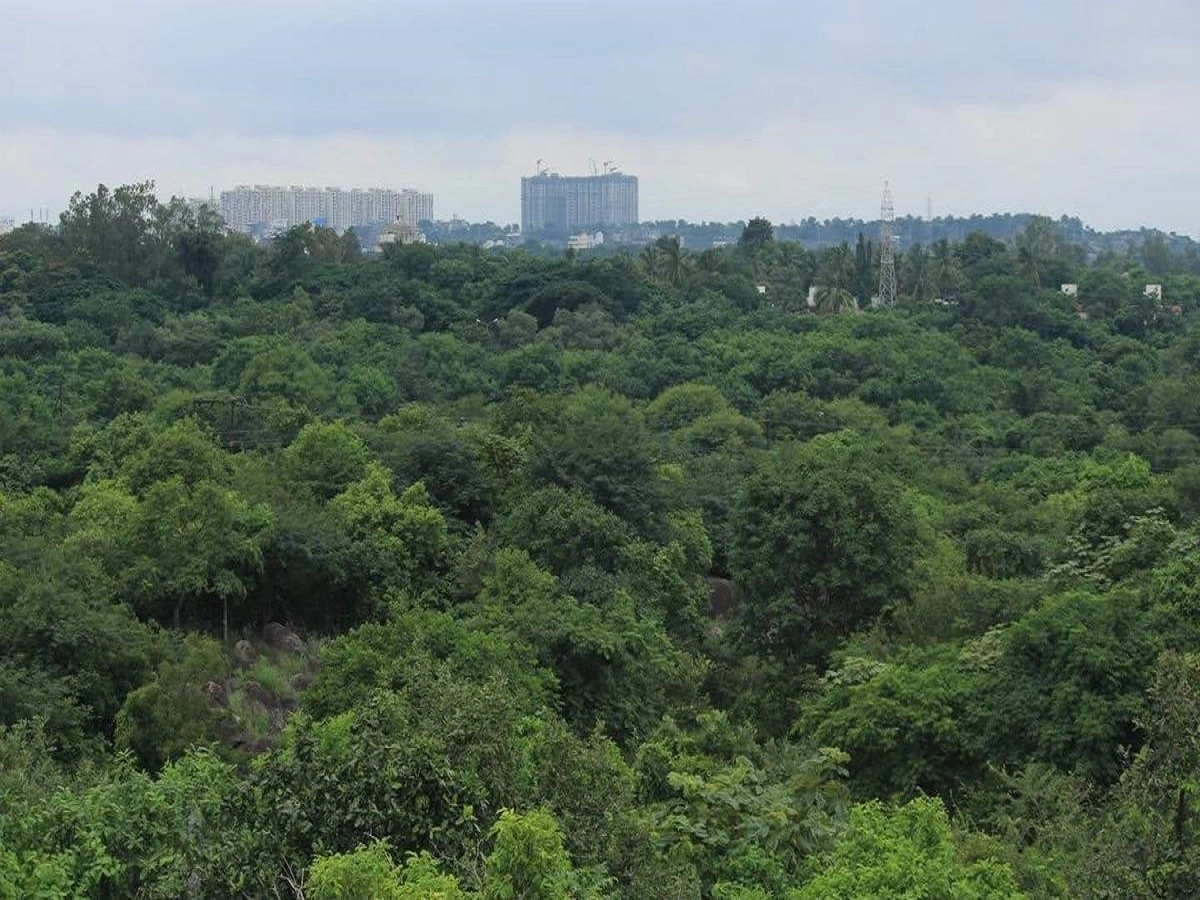
Brutal Speed of Destruction: Bulldozers Over a Holiday Weekend
The Supreme Court questioned the urgency and timing of the operation. Visuals and reports submitted to the court show that authorities cleared vast stretches of tree cover over a long weekend—raising suspicions that the operation was timed to avoid public scrutiny and legal hurdles.
The CEC noted in its report:
“The undue haste with which the clearing operations were undertaken by Telangana Industrial Infrastructure Corp appears to be a calculated move to pre-empt and undermine the process of identification of forest-like areas.”
Heavy machinery was used to uproot over 1,500 trees, of which 1,399 were claimed to be “exempted species” under the Telangana Water Land and Trees Act, 2002.
Telangana Government’s Defense: Invokes Self-Certification under TWLTA
Appearing for the state, senior advocate Abhishek Manu Singhvi argued that the tree felling did not violate any laws, as it applied only to “exempted species.” Under the 2002 Act, trees like neem, babul, subabul, and eucalyptus do not require prior permission for felling if a self-certification form is submitted to the Forest Divisional Officer.
The Court cited past instances where even the Union Government had sought judicial approval before felling trees for public interest projects like:
-
Strategic road expansions in Uttarakhand
-
Metro rail developments in urban areas
“Under Article 142 of the Constitution, we can do anything. We will go out of the way if needed to protect the environment,” the Court warned.
However, the Supreme Court rejected this argument outright, stressing that no statutory provision or state-level rule could override its landmark 1996 ruling in the TN Godavarman case.
“Even private forests require the court’s permission to fell trees. Any enactment or interpretation which falls foul of this Court’s December 12, 1996 order will not be tolerated,” the bench said.
The 1996 judgment had expanded the definition of forests to include not only land with tree cover in the dictionary sense but also any land recorded as forest in government records, thereby broadening legal protections under the Forest Conservation Act.
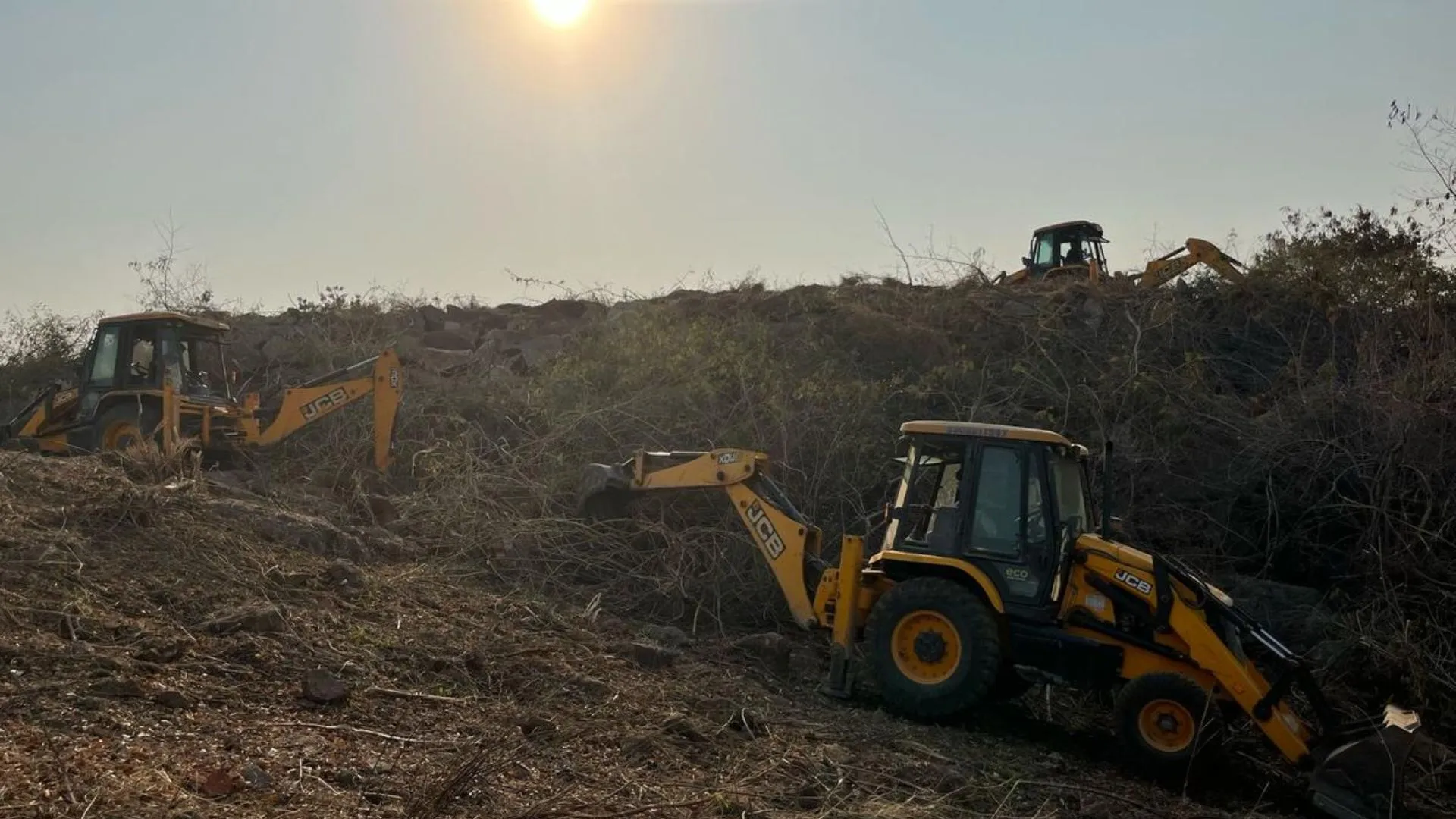
Ecological Damage: Displaced Wildlife, Attacks by Stray Dogs
During the proceedings, the Court expressed horror at video evidence showing herbivorous animals fleeing the area and being attacked by stray dogs due to loss of habitat. The bench accused the government of failing to consider the impact on wildlife and questioned reports suggesting that the state had "self-exempted" animals from protected species lists.
“We were shocked to see visuals of animals running for shelter. We were told some were even attacked by stray dogs,” the Court observed.
In light of this, the Court directed:
-
The Telangana Wildlife Warden to immediately assess the damage.
-
A credible ecological restoration plan for the 100 acres must be submitted within four weeks.
-
No further tree felling or construction activity unless explicitly permitted by the Court.
-
A formal wildlife impact report to be submitted as part of the restoration strategy.
"Restore 100 Acres or Face Jail": SC Warns Senior Bureaucrats
The Court came down heavily on the state’s bureaucratic machinery. In no uncertain terms, the bench warned that senior officials, including the Chief Secretary, could face “temporary imprisonment” if the deforested area is not restored.
"If you want to save your Chief Secretary, come up with a plan… otherwise we don’t know how many of your officers will go to temporary (jail)," said Justice Gavai.
The Court also questioned the timing of the deforestation—conducted swiftly over a long weekend starting March 27—only days after the land had been mortgaged to a private entity for ₹10,000 crore. The CEC (Central Empowered Committee) noted that even a notified lake was part of the mortgaged property, raising concerns about irregularities and environmental violations.
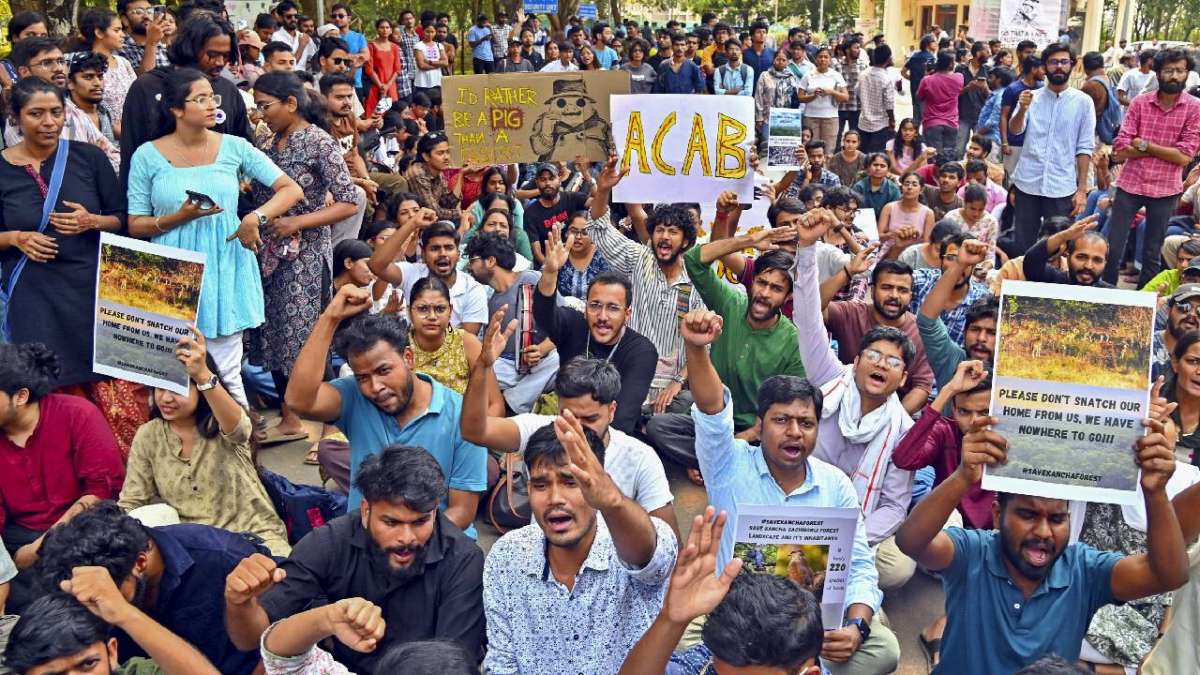
Solicitor General Backs Court’s Position
Appearing for the union government, Solicitor General Tushar Mehta supported the court’s stance, pointing out that even in public interest projects like the metro rail, governments always sought court permission before felling trees.
He further cited examples of the central government approaching the Supreme Court for tree clearances required for:
-
Expansion of strategic roads in Uttarakhand
-
Troop mobilization infrastructure in sensitive border regions
The bench responded:
“If the State wished to construct something, it should have taken permission.”
It reaffirmed that environmental matters would not tolerate procedural shortcuts and that any self-certification policy the state relied upon would amount to a violation of the 1996 Godavarman order.
CEC Findings: Deforestation “A Calculated Move”
The Central Empowered Committee, a statutory environmental oversight body, submitted a scathing site inspection report highlighting:
-
Use of heavy machinery to uproot trees
-
The presence of endangered species in the area
-
Photographic proof of biodiversity under threat
-
A mortgage deed executed for ₹10,000 crore before deforestation began
-
Ownership disputes, including claims that the land originally vested with the University of Hyderabad via a conditional MoU
The CEC concluded that the “undue haste” in clearing operations appeared to be a deliberate attempt to undermine the process of identifying forest-like areas.
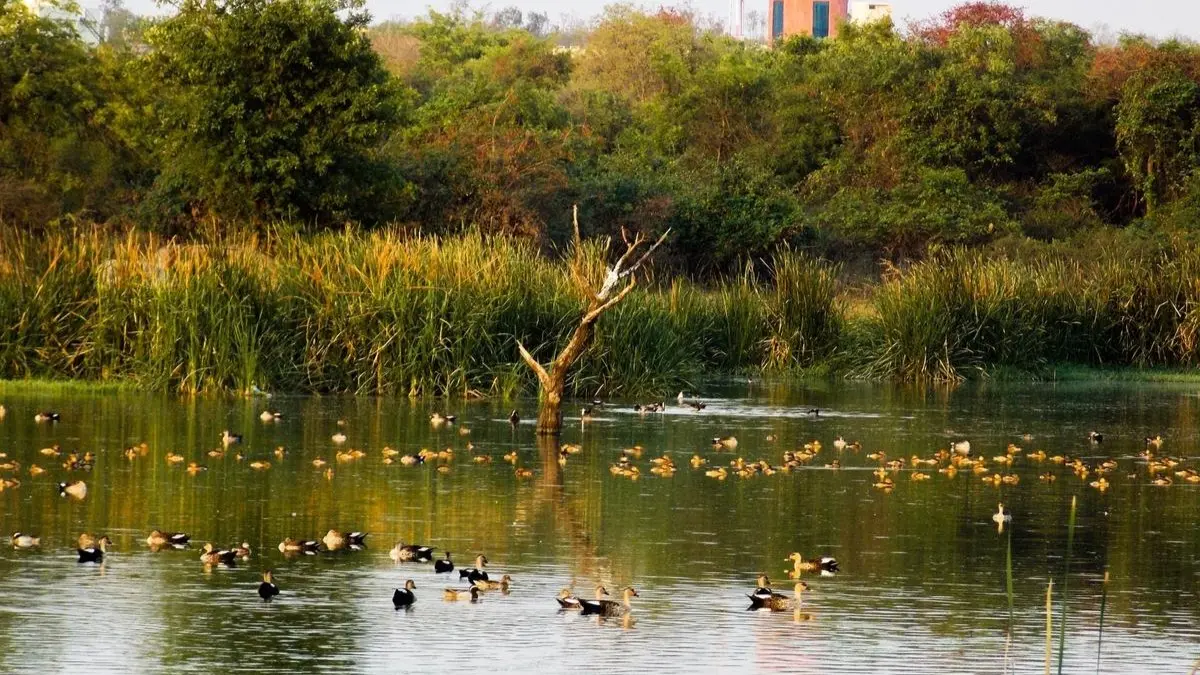
Telangana’s Political Reactions and Clarifications
Senior advocate Abhishek Manu Singhvi, representing the Telangana government, admitted there “may have been some errors” but insisted that actions were carried out in “good faith.”
Responding to criticism, the Telangana government claimed that:
-
The land never belonged to HCU.
-
The land was state-owned and not forest land
-
No land transfer or encroachment occurred involving the university.
-
The process of tree felling had begun in March 2024, and there was no undue haste.
The government also accused opposition parties such as BRS and BJP of politicizing the issue by sharing misleading videos and false narratives.
Meanwhile, the Telangana Congress government stated that any previous decisions to auction the land were taken during the BRS regime, and the current government is open to course correction.
What Happens Next: Court’s Timeline and Demands
The Supreme Court has set May 15, 2025, as the next date for further consideration. It has directed the Telangana government to:
-
Submit a detailed ecological restoration plan for the affected 100-acre forest patch.
-
File a formal reply to the CEC’s findings, including ownership, legal status, and mortgage details.
-
Report on the wildlife protection measures taken so far and those planned.
-
Halt all future tree felling or construction unless explicit permission is granted by the Court.
Landmark Moment for Urban Environmental Justice
The Supreme Court’s firm stand in the Kancha Gachibowli tree felling case reaffirms the judiciary’s role as a key defender of environmental integrity in India. This case, straddling issues of land ownership, wildlife displacement, bureaucratic accountability, and constitutional protections, may set an important precedent on how courts assess ecological damage in rapidly urbanizing areas.
In a time when infrastructure ambitions often override ecological concerns, the Court’s message is clear: No development is justified if it comes at the irreversible cost of nature.
With inputs from agencies
Image Source: Multiple agencies
© Copyright 2025. All Rights Reserved Powered by Vygr Media.

